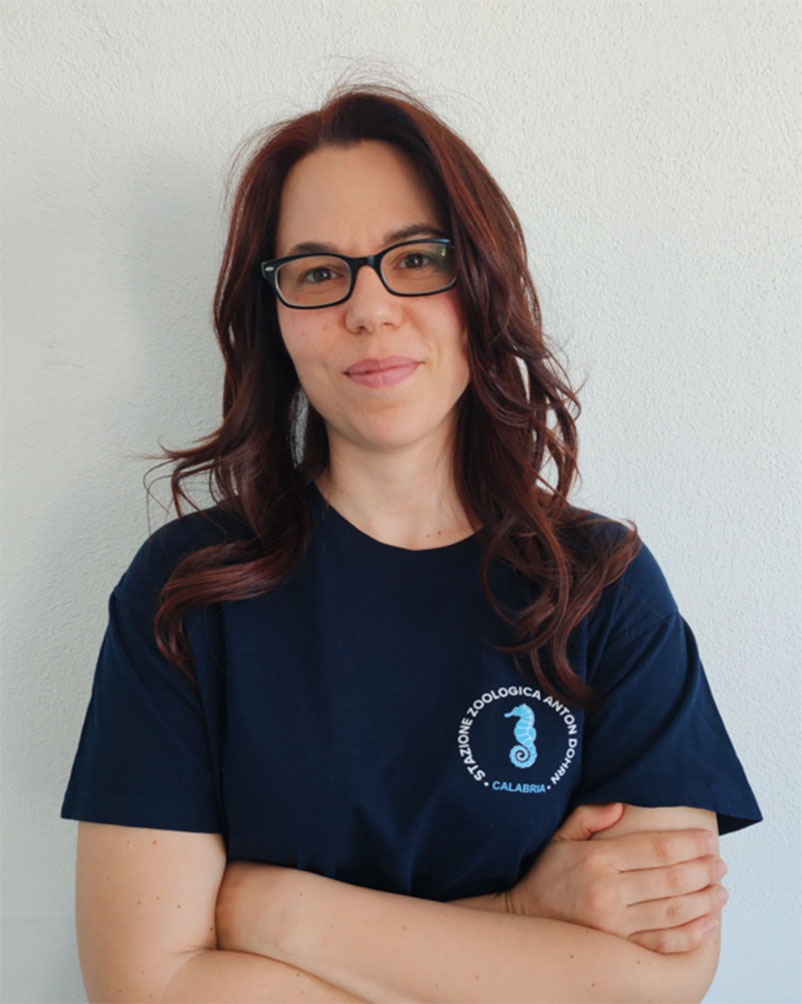 Research technician
Research technician
Stazione Zoologica Anton Dohrn
Calabria Marine Centre – CRIMAC
Department of Integrated Marine Ecology (EMI)
C.da Torre Spaccata, Località Torre Spaccata, 87071 Amendolara – Italia
E-mail: This email address is being protected from spambots. You need JavaScript enabled to view it.
Contatto Skype: live:kiria15_1
Chiara Molino - Google Scholar
Short CV
- (2010) Bachelor’s degree in Environmental Science at the University of Genoa with 98/110, thesis title: “Study of interspecific foraging associations of coastal fishes by “Visual Census””.
- (2012 – 2013) International Specialization Program "Center of Excellence Program in Observation Oceanography" at the Bermuda Institute of Ocean Sciences (BIOS).
- (2014) Master’s degree in Conservation of Nature, at the University of Tuscia with 110/110 cum laude, thesis title: “Marine antifouling in harbour environments: ecotoxicity and role of some trace metals in two case studies”.
- (2015) Scholarship in “Analysis and Monitoring of Horizon Calls for Proposals” at the University of Tuscia.
- (2015 – 2019) PhD in Ecology and Sustainable Management of Environmental Resources XXXI cycle, thesis title: “Plastic marine debris and their additives: in vitro assessment of phthalates cytotoxicity and genotoxicity on European sea bass and bottlenose dolphin cell lines”.
- (2021) Master’s degree in Marine Biology and Ecology, at the University of Tuscia with 110/110 cum laude, thesis title: “Ecotoxicological effects of river’s mouth water detected with the use of zebrafish (Danio rerio) embryo model”.
- (2022 – 2023) Research grant in “Deep-Sea Biodiversity" at SZN, Calabria Marine Centre, Amendolara.
- (2023 – 2025) Postdoctoral fellow on CRIMAC project at SZN, Calabria Marine Centre, Amendolara.
- (April 2025 – current) CTER VI Professional level at SZN, Calabria Marine Centre, Amendolara.
Tasks
- Technical and experimental support for research activities, in particular in the application of microscopy techniques;
- Extraction of microplastics from different environmental matrices (water, sediment, marine organisms);
- Characterization and identification of plastic polymers by Fourier transform infrared spectroscopy (FT-IR);
- Support in the development and application of extraction protocols;
- Preparation and analysis of samples for genotoxicity studies by optical and fluorescence microscopy techniques;
- Support in the development and application of genotoxicity protocols on marine organisms.
Main publications
Molino C, Lacchetti I, Cristiano W, di Domenico K, Carere M, Angeletti D. (2025). Zebrafish Embryo Model as a Tool for Ecotoxicological Studies in Central Italy's Transitional Waters. Environmental Management, 75(6):1602-1614. DOI: 10.1007/s00267-025-02178-2
Molino C, Filippi S, Giovani G, Caccia A, Meschini R, Angeletti D. (2023). Effects of phthalates on marine organisms: cytotoxicity and genotoxicity of Mono-(2-ethylhexyl) phthalate (MEHP) on European seabass (Dicentrarchus labrax) embryonic cell line. Annali dell’Istituto Superiore di Sanità, 59(1):68-75. DOI: 10.4415/ANN_23_01_10
Giovani G, Filippi S, Molino C, Peruffo A, Centelleghe C, Meschini R, Angeletti D. (2022). Plastic additive di(2-ethylhexyl) phthalate (DEHP) causes cell death and micronucleus induction on a bottlenose dolphin’s (Tursiops truncatus) in vitro-exposed skin cell line. Frontiers in Marine Science, 9:958197. DOI: 10.3389/fmars.2022.958197
Molino C, Filippi S, Stoppiello GA, Meschini R, Angeletti D. (2019). In vitro evaluation of cytotoxic and genotoxic effects of Di(2-ethylhexyl)-phthalate (DEHP) on European sea bass (Dicentrarchus labrax) embryonic cell line. Toxicology in vitro, 56:118-125. DOI: 10.1016/j.tiv.2019.01.017
Molino C, Angeletti D, Oldham VE, Goodbody-Gringley G, Buck KN. (2019). Effect of marine antifouling paint particles waste on survival of natural Bermuda copepod communities. Marine Pollution Bulletin, 149:110492. doi: 10.1016/j.marpolbul.2019.110492










